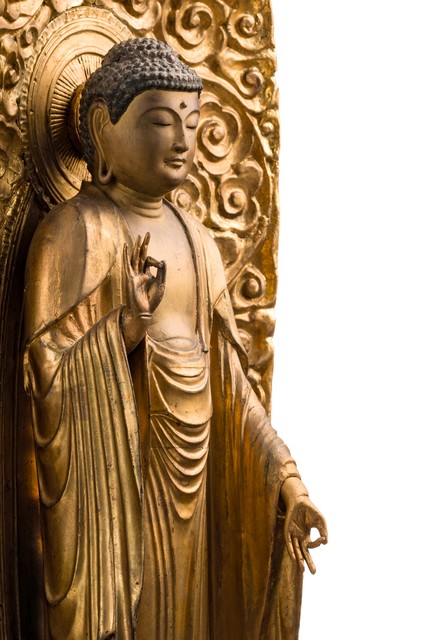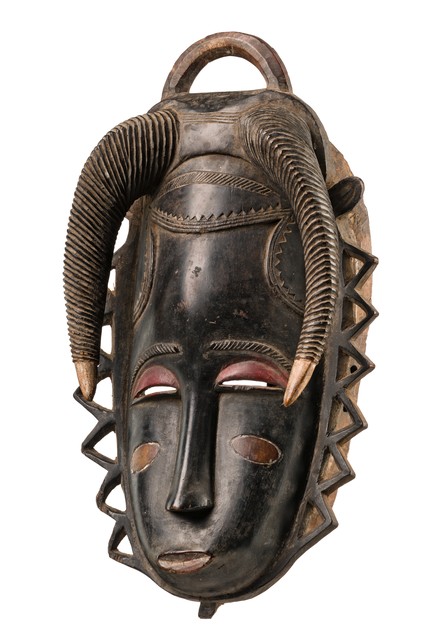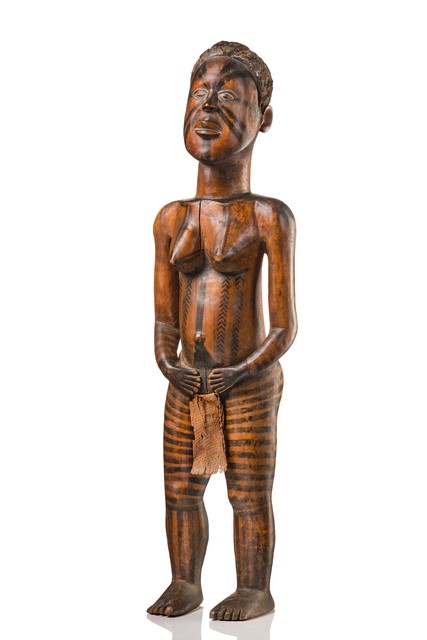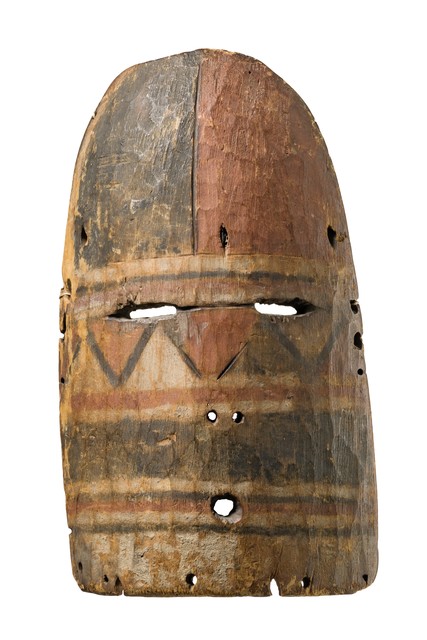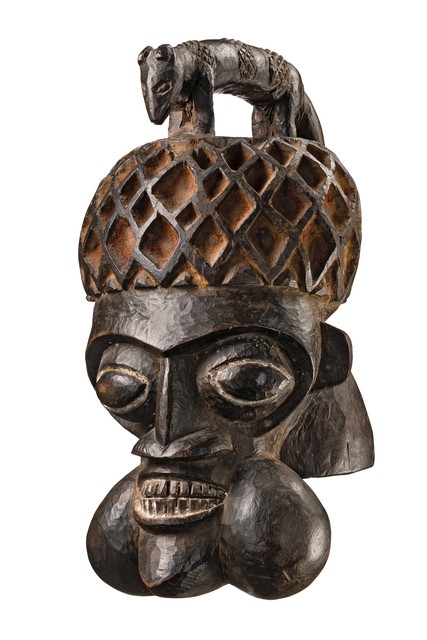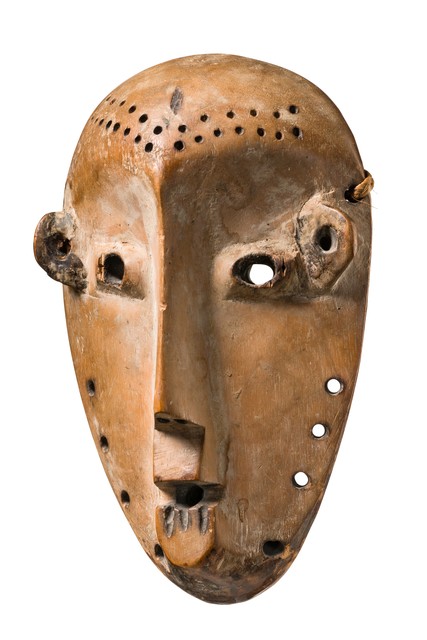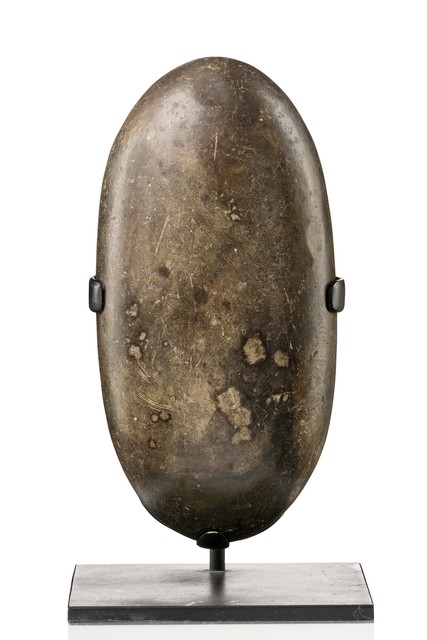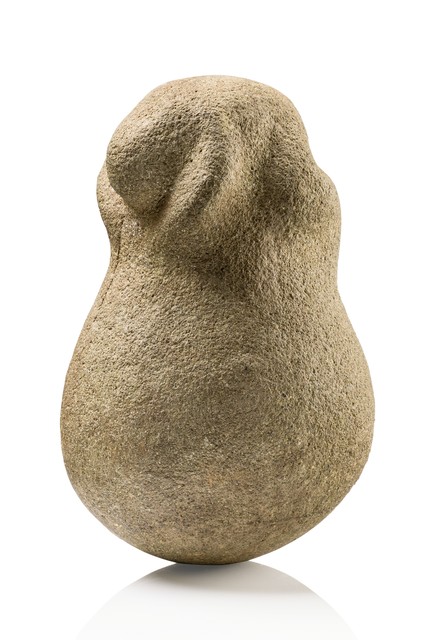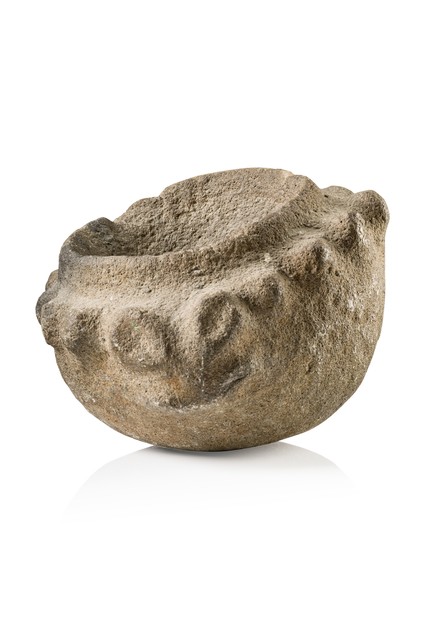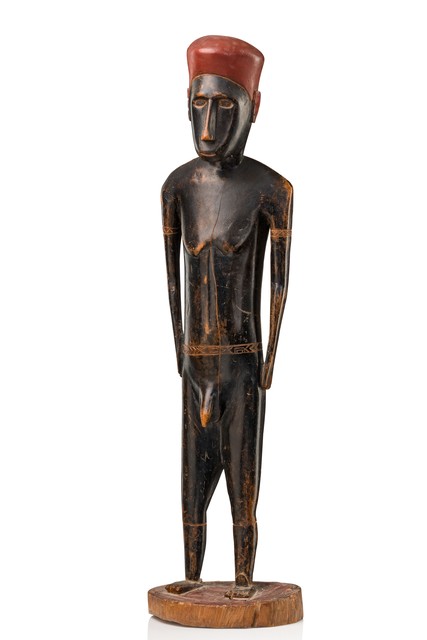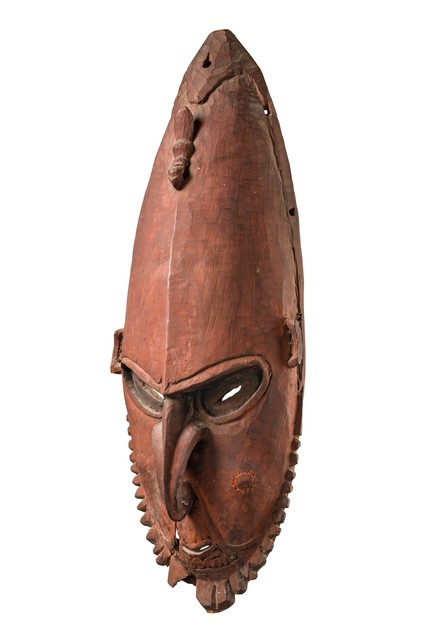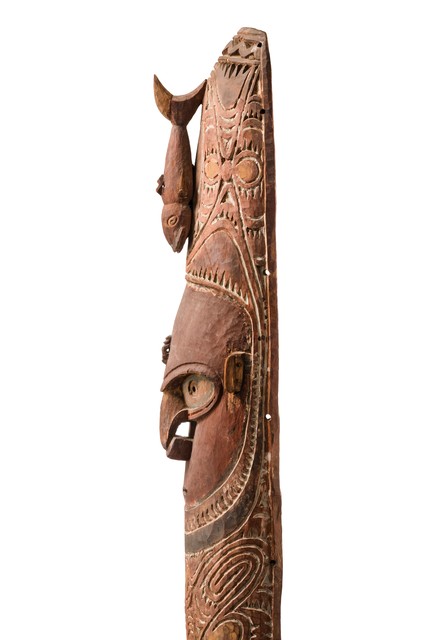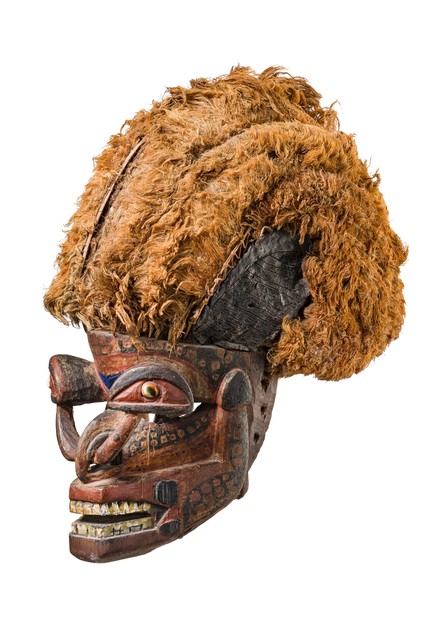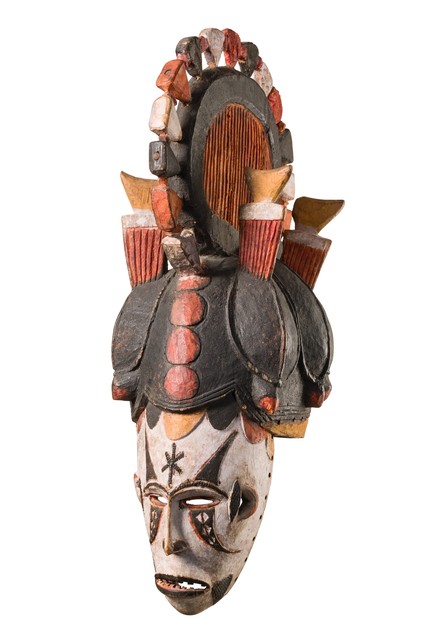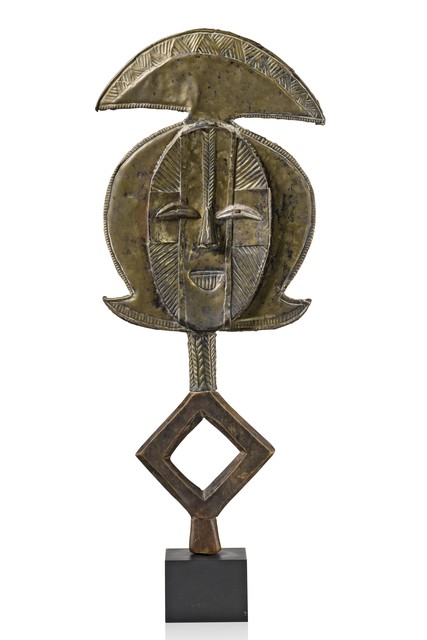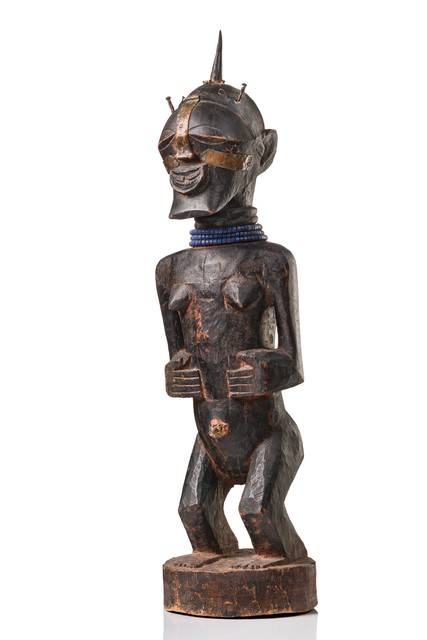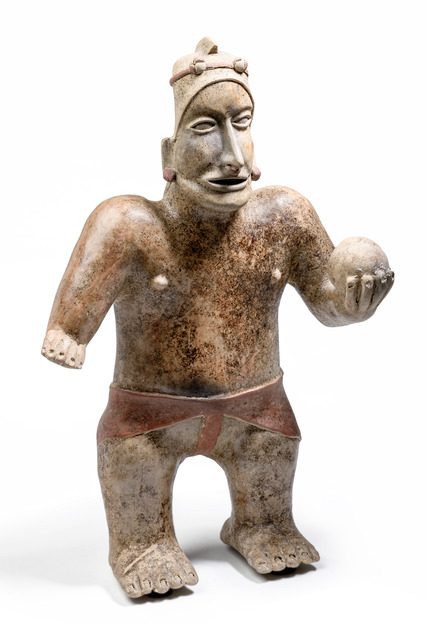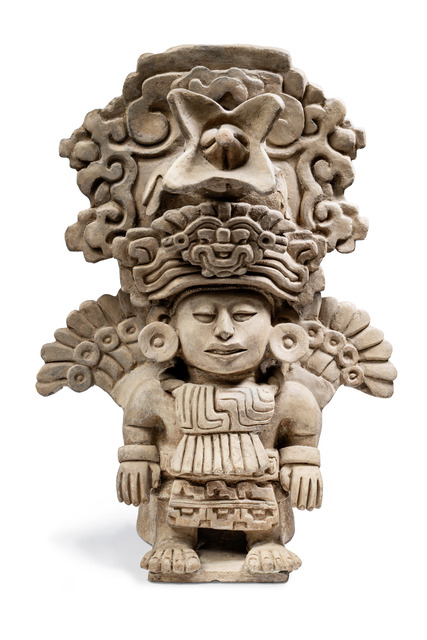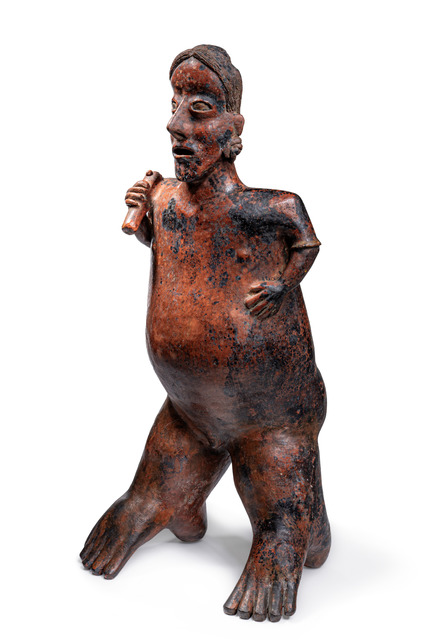From the Highlands of New Guinea to Monte Albán
15 November 2025 - Masterpieces from private collections and other properties
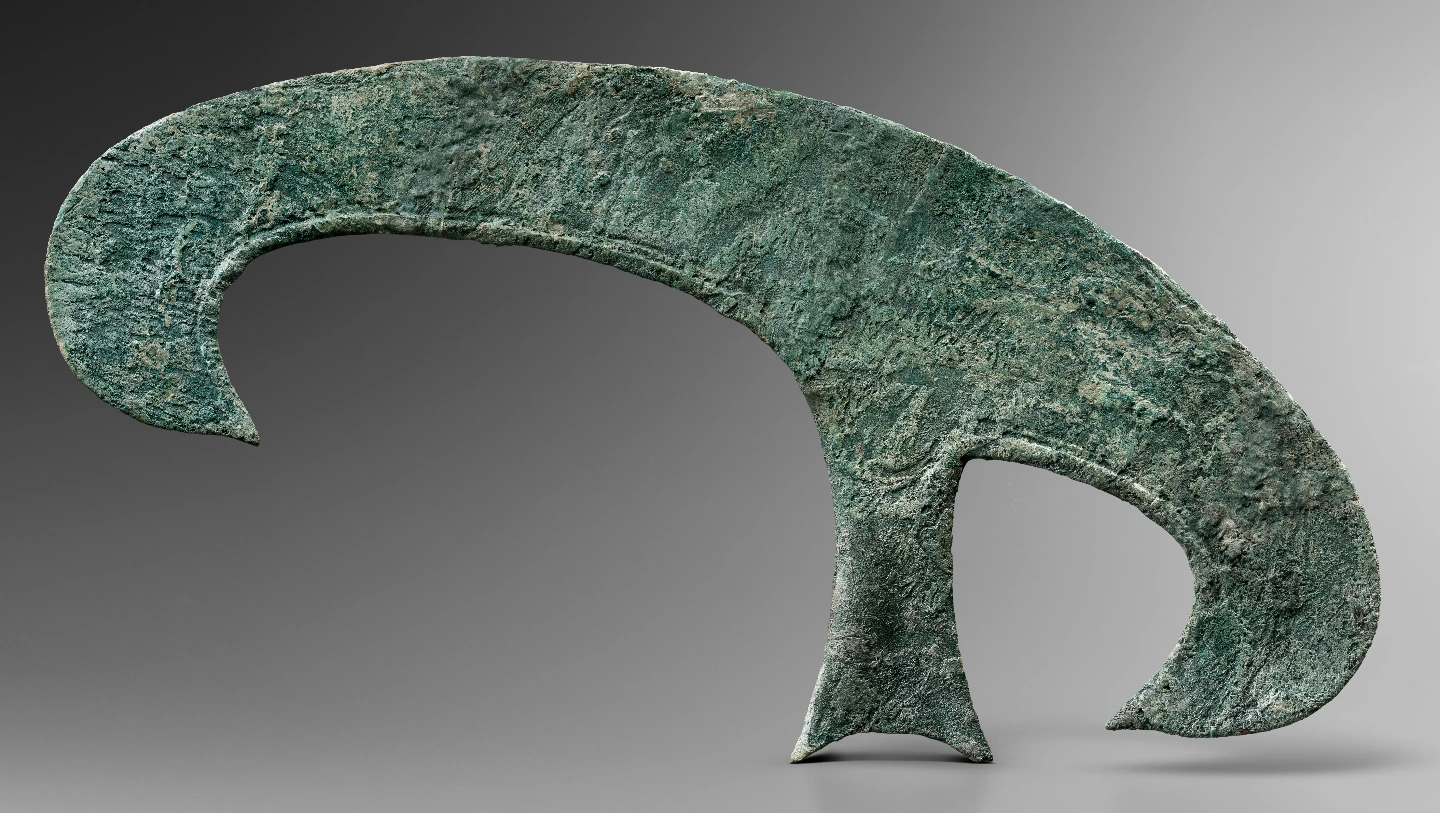
Auction in Würzburg:
Saturday, 15 November 2025 – 2 pm (CET)
Preview:
From November 12 to 14 - from 10 am to 5 pm (CET)
And by appointment
Art that makes history: From the earliest stone carvings from the New Guinean Highlands, through the antiques of Asia and the Mediterranean, to the vibrant ceramics of pre-Columbian cultures; from the evocative figures and masks of Africa to the striking ethnographic sculptures of Oceania.
Discover gorgeous art spanning four millennia and carefully selected for its timeless elegance and aesthetic refinement—like this perfectly designed ceremonial halberd from East Java. A work of timeless aesthetic and elegance!
Read more about the highlights and private collections here and in our printed catalogue.
Japan: "Amida Buddha", Edo period (1603-1868)
ProvenancePerrett & Fils & Vibert, Paris, France · Hans Heinrich Josef Meyer (1858-1929), Leipzig, Germany · By descent through the familyCôte d'Ivoire, Yaure: Beautiful face mask "tu bodu" (buffalo)
ProvenanceBohumil Théophile Holas (1909-1978), Abidjan, Ivory Coast · Emil Storrer (1917-1989), Zurich, SwitzerlandD. R. Congo, Azande / Mangbetu: Female ancestor figure
ProvenanceCaptain Robert Charles Couldrey CBE (1890-1974), Stafford, England (coll. in situ, ca.1928) · Robert Fade Couldrey (1932-2022), Stone, Staffordshire, England · Family-owned since thenD. R. Congo, Bakwa Luntu / Mbole: Anthropomorphic mask
ProvenanceMerton Simpson, New York, USA (inventory no. “1445”) · Ernst (1914-2002) & Ruth Anspach, New York, USA (label “EA VI-8”) · Mr. & Mrs. J. Werner Gillon, London, England · Sotheby’s, London, The Tara Collection, 15 July 1975, lot 72 · Sotheby’s, London, 21 June 1993, lot 186 · B. J. Orten, Frankfurt, GermanyD. R. Congo, Lega: Anthropomorphic mask "idimu"
ProvenanceAndré Vogt, Zurich, Switzerland · Lore Huber, Sinsheim, Germany
Stone carvings from New Guinean Highlands from the Marcia & John Friede Collection
Prehistoric stone carvings from Papua New Guinea is – as we now know – among theldest works in human history. They thus represent an important reference point for archaeological research in the Pacific region.
Dr. Pamela Swadling, a renowned expert and archaeologist at the Australian National University in Canberra, has been researching the cultural history of Papua New Guinea since the 1970s, and since the 2000s, specifically prehistoric stonework found in the Highlands of New Guinea.
According to Swadling, the mortars and pestles were originally used for grinding taro plants, but over the centuries or even millennia, their function changed: from their purely everyday purpose to offerings to ancestors. Stone objects, discovered by chance during gardening and construction work, provided insight into their incorporation into a ritual context.
Beyond their ethnological and archaeological significance, these works reveal a wealth of artistic creativity from this early period, as well as a universal aesthetic that continues to resonate today.
With the following lots, we present 14 works from the Jolika Collection of Marcia and John Friede, recognized as the finest private collection of New Guinea art. All prehistoric works in this offering were published in 2017 in the comprehensive exhibition catalogue for „New Guinea Highlands: Art from the Jolika Collection“ at the De Yong Fine Arts Museum in San Francisco.
Papua New Guinea - Middle Sepik, Yanitobak, Karawari: Anthropomorphic stone pestle
ProvenanceLord Alister McAlpine (1942-2014), London, Great Britain · Anthony JP Meyer, Paris, France · John & Marcia Friede, Rye, USAPapua New Guinea - Highlands: Prehistoric stone mortar with anthropomorphic face
ProvenanceFound by the previous owner in a ship’s hold during voyage from Papua New Guinea to New Zealand · John & Marcia Friede, Rye, USA
The Henry Erfeling Oceania Collection, Hamburg / Lübeck (1901 – 1990)
With the Henry Erfeling Oceania Collection, we are fortunate to present works from the Bismarck Archipelago – in addition to the historical Bruno Geisler Collection – which have also remained in the family’s possession to this day and are being shown for the first time.
Raised in Bremerhaven, Henry Erfeling completed an apprenticeship in mechanical engineering at the long-established Tecklenborg shipyard in Geestemünde-Bremerhaven and began his maritime career as an assistant engineer with the Rickmers shipping company in 1921.
A significant career move came with his move to Norddeutscher Lloyd in Bremen, a shipping company that made a decisive contribution to the economic and cultural development of the Hanseatic cities of Bremen and Bremerhaven. The seafaring log records of his service between February 1929 and February 1930 on the TS Coblenz – initially as 4th Engineer, then from the summer of that year as 3rd Engineer to Singapore, where, just one day later, on February 18, 1930, he began his service as 2nd Engineer on the DS Bremerhaven for the next four years (1930 to 1934).
The DS Bremerhaven had been converted in 1928 for island service in the South Pacific. For the next four years (1930–1934), he transported trade goods – primarily copra, the smoke-dried coconut pulp – from the ports of the Bismarck Archipelago, such as Rabaul, Alexishafen, and Finschhafen, to Hong Kong.
After this time, he served for another three years as 2nd Engineer on the TS Scharnhorst, an express steamer in the East Asia service.
The center of his life during these years was the Hildesheim Mission for the Blind in Hong Kong, where he lived with his wife and daughter until their return to Germany.
For Erfeling, these trading voyages provided direct access to the diverse cultures of Oceania. Upon his return to Germany in 1936/1937, where he began studying naval engineering, the works of art and objects he had collected during his travels also made their way to Europe. These included Chinese antiques and dance masks from Papua New Guinea, which were “presented to him as farewell gifts by a copra shipper,” according to the archives, and which “in the opinion of the management of the Rijksmuseum in Amsterdam, are worthy of being shown under the same roof as the paintings of Mr. Rembrandt.”
The memory of this time remained vivid in the family: His granddaughter reports that her grandfather owned a photo album with pictures of Papua New Guineans—from today’s perspective, an invaluable document of the time. But the pictures, which showed men and women in traditional, light clothing unusual for European eyes, “did not appeal to the grandmother and were therefore discarded by her.”
Solomon Islands: Male figure
ProvenanceHenry Erfeling (1901-1990), Lübeck, Germany (coll. in situ, 1930-34) · Family-owned since thenPapua New Guinea - Lower Sepik, Murik: Mask "brag"
ProvenanceHenry Erfeling (1901-1990), Lübeck, Germany (coll. in situ, 1930-34) · Family-owned since then
Oceania in the Hubert Geisler Collection
1863 Mittelwalde/Schlesien – 1943 Würzburg [1]
Little is known about Hubert Geisler, colonial administrator in German New Guinea: recent sources from 2024 mention him in connection with his brother Bruno and their joint ornithological collecting and research trips to Ceylon and Borneo, where they worked from 1887 to 1889 on behalf of the natural history dealer Wilhelm Schlüter in Halle (Saale) and the Royal Zoological and Anthropological-Ethnographic Museum in Dresden. [2]
This will be followed by a joint trip to New Guinea. While his brother continued his ornithological collecting, Hubert traveled on to German New Guinea (Finschhafen 1890) and in 1891 he entered the service of the Berlin planting and trading company „Neuguinea-Kompagnie” in Herbertshöhe, initially as plantation supervisor and director, and from 1899 as administrator for the Bismarck Archipelago. [3]
From the business correspondence, which was donated to the State Museum of Ethnology (SMfVM, now the Museum Fünf Kontinente - Museum of Five Continents) by his heirs in 2004 along with his photographic collection [4], it emerges that until 1920 he served as an administrator, primarily on the Bismarck Archipelago in Rabaul and Herbertshöhe (once the colony’s capital, today’s Kokopo), and from 1909 until the reorganization of the operations in 1913, he was also responsible for the administrative districts of Stephansort and Bogadjim in New Guinea. [5]
He remained loyal to the trading company for over three decades, experiencing the ups and downs of the distant and then still young German South Sea colony: the challenges and difficulties of successfully managing remote administrative districts, crop failures, the harsh consequences of the First World War, and profound personal upheavals (divorce from his wife in 1912, departure of his beloved niece in 1914, and her death in 1917).
In 1919 and 1920, he submitted several requests to the Berlin administration to return to Germany, citing his “long, uninterrupted stay in the tropics” and “what has happened in recent years. […] If I add that I no longer fit in with the circumstances here. […] Anyone who has lived through almost an entire colonial era is happy to leave the scene at its conclusion.” Several more months would pass before the Australian occupation forces granted the Germans their exit after clarifying the expropriation procedures.
Finally, Hubert Geisler returned to Germany – via Batavia and Rotterdam – at the end of September 1921. [6]
Unlike the written documents and photographs, a few ethnographic objects have remained in the family’s possession to this day, as well as this ancient “tatanua” mask from New Ireland (Bismarck Archipelago) presented here.
References:
[1] Divergent information on biographical data in Münchner Beiträge zur Völkerkunde, Yearbook of the State Museum of Ethnology Munich (SMfVM), Vol. 11, 2007:284 and at https://de.wikipedia.org/wiki/Bruno_Geisler
[2] https://de.wikipedia.org/wiki/Hubert_Geisler
[3] References and all quotations from the records in the SMfVM, Geisler collection
[4] 100 glass plate negatives and some 20 large-format slides, realised by him, bear witness to life in the area.
[5] Münchner Beiträge zur Völkerkunde, Yearbook of the State Museum of Ethnology Munich, Vol. 10, 2006:54, Vol. 11, 2007:284ff
[6] Biographisches Handbuch Deutsch-Neuguinea 1882-1922, Berlin 2002:111
Papua New Guinea - Bismarck Archipelago - New Ireland: Helmet mask "tatanua"
ProvenanceHubert Geisler (1863-1936), Würzburg, Germany
Works from the Africa Collection of Werner and Lotte Krause, Hamburg
(1924 – 2006 / 1926-2025)
Constantly expanding one’s horizons, daring to try new things, and changing perspectives. “For my parents, this wasn’t just a phrase, but a lived attitude that they also passed on to us children, “recalls son Felix. “Learning new things, being open to other perspectives,” his father practiced throughout his life. Even as a child, he discovered painting and with it a fascination for forms, materials, expression, and visual narrative. Painting remained – alongside his career – his very own artistic refuge.
He and his wife immersed themselves in the cultural cosmos. Joint trips outside of Europe took them to Hong Kong, China, the USA, and various regions of Africa. The numerous works in their collection reflect this. A trip to New York to meet private collectors of African art was particularly formative. These encounters not only opened up new perspectives on art but also deepened her passion for the diversity and expressiveness of foreign cultures.
So it’s not surprising that in 1989, after his retirement, he enrolled again in a course of study: “Ethnology” at the University of Hamburg, which gave him the opportunity to understand the works from a scientific perspective.
The Krause Collection, from which we are pleased to present a selection of works of aesthetic beauty and refinement, was largely created in the 1980s in close collaboration with Henk Italiaander, a gallery owner from Amsterdam, and the Kiel-based collector Bernd Muhlack.
Nigeria, Igbo: Maiden spirit mask "agbogho mmwo"
ProvenanceLempertz, Brussels, Belgium, 28 April 2007, lot 98 · Werner & Lotte Krause, Hamburg, GermanyGabon, Kota: Reliquary guardian figure "mbulu-ngulu" or "boho-na-bwete"
ProvenanceLouis Pieter Cornelis van Rijn, Amsterdam, The Netherlands (Galerie Kephri) (ca. 1979) · Italiaander Galleries, Amsterdam, The Netherlands · Werner & Lotte Krause, Hamburg, Germany (1987)D. R. Congo, Songye: Female power figure "nkisi"/ "nkishi" (pl. "mankisi" / "'mankishi")
ProvenanceBaillieus (1986) · Werner & Lotte Krause, Hamburg, Germany (1986)
Pre-Columbian ceramics from the A. and B. Schirmer Collection, Berlin
The ancient world – for the Schirmer couple, it‘s practically on their doorstep, in Syria and other Mediterranean countries, where they worked as geologists for several years in the 1970s, and later worldwide in the UNO diplomatic service.
A job and career, and still time for art – a fortunate circumstance for both of them. Even then, fascinated by the archaeological treasures of ancient and ancient-Near Eastern civilizations, they began collecting objects and studying their cultural history.
Back in Germany, it was primarily museums where they deepened their knowledge and fascination with non-European cultures. And it was here that their perspective broadened to include the art of Pre-Columbian culture. „This is so fascinating because the history of these peoples was neither documented nor written down. The objects themselves are testimonies and, artistically rendered with great finesse and detail, tell the story of the cultures, whether in depictions of gods or god-like beings, or in depictions of everyday moments.“
We are therefore delighted to present 25 selected works, including a figurative urn from the heyday of Monte Albán Culture III. Artistically, this is an outstanding work that reflects the high quality standards of the collecting couple and is underscored by its renowned provenance.
Mexico, Jalisco: Standing Ball Player, Ameca-Etzatlán Style, Protoclassic, ca. 100 BC - 250 AD
ProvenanceNew Jersey Private Collection, USA (acquired in the 1960s) · Bonhams, New York, USA;, 9 November 2011, lot 179 · A. & B. Schirmer, Berlin, GermanyMexico, Zapotecs, Oaxaca, Monte Albán III: Figurative Urn, ca. 300 - 800 AD
ProvenanceRoyal-Athena Galleries, New York, 1988 · A. & B. Schirmer, Berlin, GermanyMexico, Nayarit, Ixtlán del Río: Standing male figure, ca. 200 BC – 300 AD
ProvenanceCollection Thomas Borkowsky, Neuwied, Germany (2013) · A. & B. Schirmer, Berlin, Germany
See also: https://tribalart.de/en/blog/2025/africa-asia-oceania-pre-columbia-and-antiquites/

